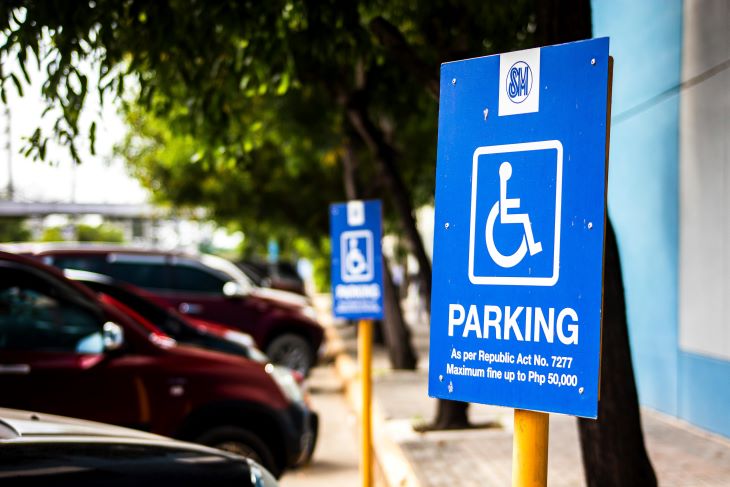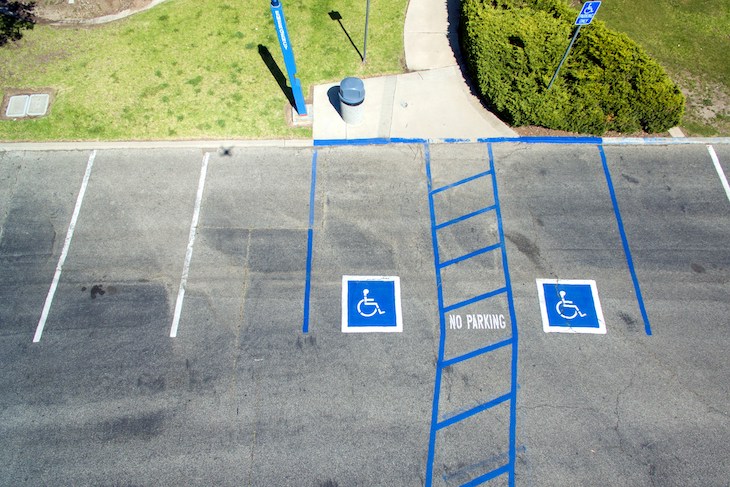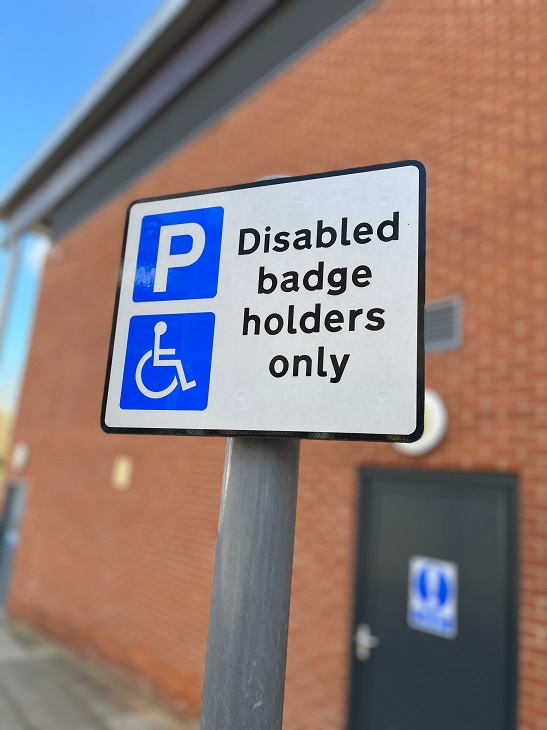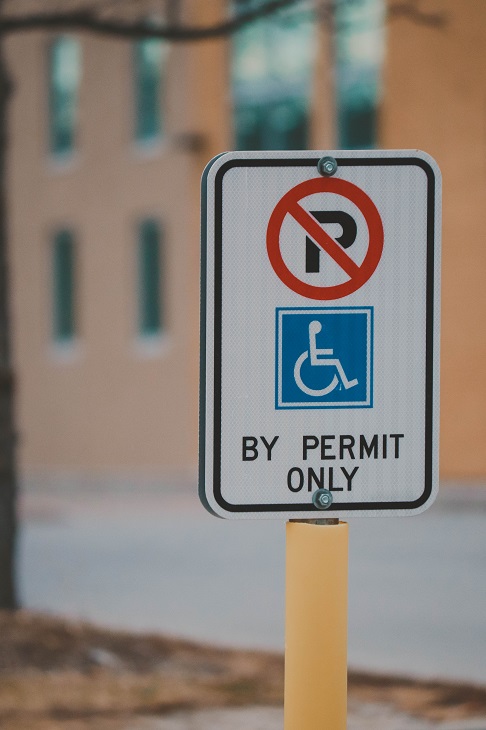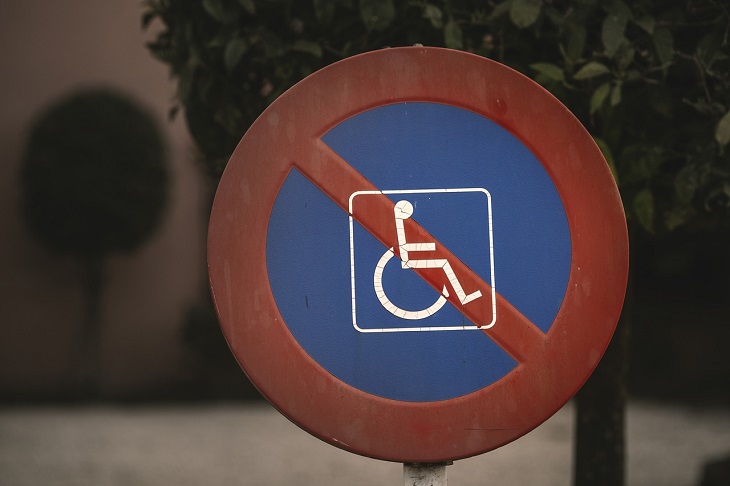Ever wondered why Arizona handicap parking space dimensions are the same as Minnesota handicap parking space size requirements? Or why Oregon handicap parking rules and regulations are so similar to West Virginia disability parking laws? It’s all to do with a little something called the ADA!
In the pursuit of fostering an inclusive and equitable society, the United States has made significant strides in enhancing accessibility for individuals with disabilities. The ADA, or Americans with Disabilities Act, stands as a landmark legislation that mandates the removal of barriers, both physical and digital, to ensure equal access for all. As the nation continues to evolve, the importance of ADA-compliant spaces becomes increasingly evident, transcending mere legal requirements to embody a commitment to diversity and universal access. Let’s take a closer look at some of the many ways that ADA-compliant spaces contribute to the broader goal of improving accessibility in the US, exploring the positive impact on the lives of individuals with disabilities and the collective advancement toward a more inclusive future.
What is the Americans with Disabilities Act and Why is it so Important?
Accessibility is a fundamental pillar of a just and inclusive society, representing the commitment to providing equal opportunities and breaking down barriers for all individuals, regardless of physical abilities. In the United States, the concept of accessibility holds particular significance, epitomized by the ADA, a landmark piece of legislation enacted in 1990.
Enacted with bipartisan support, the ADA was a groundbreaking legislative achievement. The primary purpose of the ADA is to prohibit discrimination against individuals with disabilities and to ensure their full and equal participation in various aspects of society, including employment, public services, public accommodations, and telecommunications. The ADA is a comprehensive civil rights law that seeks to remove barriers and promote equal opportunities for people with disabilities.
The Act encompasses a wide range of provisions, including those related to employment, public services, telecommunications, and public accommodations. It is the latter aspect, public accommodations, that significantly impacts the physical spaces we encounter daily, including the often-overlooked but crucial realm of parking facilities.
Why is Disabled Parking So Important?
Disabled parking is of paramount importance as it serves as a tangible embodiment of a society’s commitment to inclusivity and equal access. Designated disabled parking spaces provide individuals with disabilities not only the physical proximity needed for easier access to public spaces but also a symbolic assurance that their needs are acknowledged and accommodated. These spaces play a pivotal role in fostering independence and dignity, allowing individuals with disabilities to navigate their surroundings with greater autonomy. Moreover, accessible parking is a fundamental aspect of social inclusion, breaking down physical barriers and ensuring that everyone, regardless of ability, can participate fully in community life. By prioritizing disabled parking, a society underscores its dedication to recognizing the inherent worth of every individual and actively working to eliminate obstacles that might hinder the equal participation of people with disabilities.
Let’s take a closer look at the reasons why disabled parking is so important in the United States.
1. Equal Access to Public Spaces
At its core, accessibility is about ensuring that all individuals, regardless of physical or cognitive abilities, can access public spaces with dignity and independence. Disabled parking, as mandated by the ADA, plays a vital role in this endeavor. By designating specific parking spaces for individuals with disabilities, the ADA seeks to reduce barriers that might impede their ability to participate fully in community life.
Accessible parking spaces are strategically located to provide the shortest possible route to entrances, facilitating ease of access for those with mobility challenges. This not only addresses practical concerns but also sends a powerful message about the nation’s commitment to fostering an inclusive environment where everyone is welcome.
2. Independence and Dignity
Accessible parking goes beyond mere convenience; it serves as a conduit for independence and dignity. For individuals with disabilities, the proximity of parking spaces to entrances can significantly impact their ability to navigate public spaces autonomously. The act of parking in a designated accessible spot is not just a matter of convenience; it is an affirmation of their right to participate fully in societal activities with the same level of independence as anyone else.
The dignity afforded by accessible parking extends beyond the physical act of parking; it speaks to the broader societal attitude toward disability. When individuals with disabilities encounter accessible parking spaces, it signals that their needs are not an afterthought but a fundamental consideration in the design of public spaces.
3. Social Inclusion
Access to public spaces is a cornerstone of social inclusion. When disabled parking spaces are well-designed and readily available, they contribute to creating an environment where individuals with disabilities can participate in community life without facing unnecessary obstacles. This, in turn, fosters a society where diversity is embraced, and individuals of all abilities are recognized as valuable contributors to the social fabric.
By prioritizing accessible parking, the U.S. is not only adhering to legal requirements but also actively shaping a more inclusive narrative. Every accessible parking space becomes a symbol of a society that values diversity and actively works to dismantle barriers that might exclude individuals based on their physical abilities.
What do ADA-Compliant Parking Spaces Involve?
ADA-compliant disabled parking spaces go beyond the surface-level designation of a few painted lines; they embody a commitment to fostering independence, dignity, and equal opportunity for people of all abilities. Let’s delve further into the essential elements that define ADA-compliant disabled parking spaces, shedding light on the meticulous planning and design principles that underpin their creation.
Design and Dimensions
The design of ADA-compliant disabled parking spaces is a critical factor in ensuring accessibility. The ADA specifies the dimensions and features necessary to accommodate various mobility devices and provide a barrier-free environment for individuals with disabilities. Key design elements include:
- Space Dimensions: Standard accessible parking spaces must be at least 96 inches wide, with an adjacent access aisle at least 60 inches wide. Van-accessible spaces require a minimum width of 132 inches to accommodate the deployment of ramps or lifts.
- Access Aisles: Access aisles, marked with diagonal stripes, are crucial for ensuring that individuals with disabilities can safely enter and exit their vehicles. These aisles provide the necessary space for wheelchair users to transfer in and out of their vehicles.
- Slope and Grade: ADA-compliant parking spaces must be situated on a surface with a slope not exceeding 2%, ensuring a level ground for individuals with mobility challenges.
Location and Proximity
The strategic placement of ADA-compliant disabled parking spaces is fundamental to their effectiveness. The ADA mandates that accessible spaces be located on the shortest accessible route to building entrances, minimizing the distance individuals with disabilities need to travel. Proximity to entrances is essential for ensuring convenience and equal access. Additionally, van-accessible spaces must be located near accessible entrances and should have an adjacent access aisle.
Signage and Markings
Clear and visible signage is a key component of ADA-compliant disabled parking spaces. The International Symbol of Access, a white symbol on a blue background, must be prominently displayed to indicate that a space is reserved for individuals with disabilities. Other signage may include information about fines for unauthorized use and directions to the nearest accessible entrance.
Number of Spaces
The ADA specifies the minimum number of accessible parking spaces that must be provided based on the total number of parking spaces in a facility. This allocation is designed to ensure that there are enough accessible spaces to meet the needs of individuals with disabilities, preventing overcrowding and guaranteeing availability. The number of van-accessible spaces is also dictated by specific ratios to accommodate different types of disabilities.
Van-Accessible Spaces
Recognizing the diverse needs of individuals with disabilities, the ADA includes provisions for van-accessible parking spaces. These spaces have additional width to accommodate wheelchair-accessible vans equipped with ramps or lifts. Van-accessible spaces must be identified with signage indicating the extra width and must have an adjacent access aisle.
Enforcement and Penalties
To uphold the integrity of ADA-compliant disabled parking spaces, there are enforcement mechanisms in place. Local authorities and law enforcement agencies are responsible for ensuring that these spaces are used only by individuals with disabilities who possess the required permits. Fines and penalties for unauthorized use act as deterrents and contribute to the overall effectiveness of the ADA provisions.
Challenges of Enforcement and Public Awareness of the ADA
While the ADA provides a robust framework for accessibility, challenges persist, particularly in the realm of enforcement and public awareness. Unauthorized use of accessible parking spaces remains a prevalent issue, often driven by ignorance or indifference. Effective enforcement measures, combined with comprehensive public awareness campaigns, are crucial to addressing this challenge.
Law enforcement, local authorities, and advocacy groups play a pivotal role in ensuring the proper use of accessible parking spaces. Rigorous enforcement not only deters misuse but also communicates the seriousness with which society regards the rights of individuals with disabilities. Simultaneously, public awareness campaigns can contribute to a cultural shift, fostering empathy and understanding about the impact of accessible parking on the lives of those with disabilities.
Is Disabled Parking the Same Across All 50 States?
While the ADA provides a national framework for disabled parking, there can be variations in how states implement and enforce these guidelines. The ADA offers a baseline, but states have the flexibility to introduce additional provisions or fine-tune regulations to address specific regional needs.
At its core, the ADA provides a standardized set of requirements for accessible parking spaces. As we mentioned above, these include specifications for dimensions, location, and signage, ensuring a uniform level of accessibility nationwide. The majority of disabled parking spaces across the US will look the same – Missouri handicap parking sign specifications are the same as Illinois handicap parking sign requirements, for example! However, while the ADA establishes a common foundation, states may adopt additional measures or tailor certain aspects to address unique circumstances or specific needs within their jurisdictions. This can result in variations in the implementation and enforcement of disabled parking guidelines across states.
One notable area of potential difference lies in the number of accessible parking spaces required in various facilities. The ADA provides minimum requirements based on the total number of parking spaces in a facility. Some states, however, may choose to exceed these minimums to better accommodate the needs of their populations, particularly in densely populated urban areas or areas with a higher prevalence of disabilities.
States also vary in their approaches to enforcement and penalties for unauthorized use of disabled parking spaces. While the ADA sets the framework, the actual enforcement mechanisms can differ. Some states may impose more stringent fines, towing policies, or other penalties to deter violations and ensure compliance. A Massachusetts disability parking fine amount may be different to the New Jersey handicap parking ticket cost; a Washington handicap parking violation appeal will look different to a Colorado handicap parking fine dispute; and so on. Additionally, the responsibility for enforcement may fall on different entities, such as law enforcement, local authorities, or parking enforcement agencies, and their approaches may vary.
Another area where states may differ is in the provision of accessible parking for specific types of disabilities. While the ADA provides a comprehensive framework, states may introduce additional provisions to address the unique needs of their populations. For example, some states may have specific guidelines for parking spaces accommodating individuals with mobility impairments, while others may have additional considerations for those with sensory or cognitive disabilities.
Moreover, state building codes and regulations related to parking lot design and construction can impact the overall accessibility of parking facilities. States may adopt specific provisions that go beyond the ADA guidelines to ensure that newly constructed or renovated parking lots are designed with the utmost consideration for accessibility.
Finally, the process of obtaining a handicap parking permit differs from state to state. The Connecticut handicap parking permit cost may be different to the cost in California; the price for a Wisconsin handicap parking permit renewal may not be the same as the Maryland handicap parking permit replacement fee, and so on.
These variations reflect the flexibility inherent in the ADA framework, allowing states to adapt guidelines to their specific contexts while still ensuring a baseline of accessibility and inclusivity for individuals with disabilities nationwide. Ultimately, the goal is to strike a balance between a standardized approach and the flexibility needed to address diverse and evolving accessibility needs across different states and communities.
***
In the journey toward a truly accessible and inclusive society, the role of ADA-compliant spaces cannot be overstated. By embracing and championing ADA-compliant practices, we not only enhance accessibility but also reinforce the principles of equality and dignity for all Americans. In the continual pursuit of a more inclusive future, the path forward is paved with the conscientious design and implementation of spaces that prioritize accessibility, fostering a society where everyone has the opportunity to thrive.
No matter which US state you’re in, Dr Handicap has the answer to your disabled parking question! Is your Nevada handicap parking permit lost and you don’t know what to do? Do you have a Maine handicap parking fine dispute? Do you want to know more about submitting a South Carolina disability parking placard application? Head to our site to learn more!
Featured image by Jakub Pabis on Pexels
